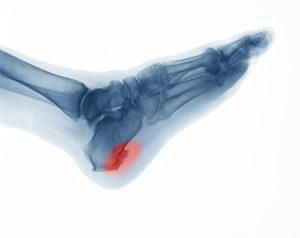
No-fault insurance means that the insurance carried by each driver covers the costs of a car accident regardless of who is at fault. However, each person must file a claim with their insurance to receive compensation for property damage from an accident.
Drivers in most no-fault states must carry Personal Injury Protection (PIP) coverage. This protection covers medical costs and expenses due to injuries from an accident.
Definition of No-Fault
The strict definition of no-fault automobile insurance is insurance that requires each driver to collect allowable compensation from their carrier. The insurance on the vehicle in which a driver or passenger is riding will issue basic compensation based on the coverage and actual bills and expenses for injuries.
An injured party may sue the at-fault driver for additional compensation in cases with extensive injuries and medical costs exceeding the coverage.
For a free legal consultation, call (614) 538-1116
No-Fault vs. At-Fault Laws
There are currently 12 no-fault states. For example, Ohio is an at-fault state. However, Michigan, Kentucky, and Pennsylvania, which border Ohio, are no-fault states. Suppose you reside near a border with any of the no-fault states. In that case, you may be involved in an accident with a driver who only has no-fault insurance coverage. The primary differences in coverage are:
- No-fault pays for medical costs using PIP coverage.
- Property damages are paid by the vehicle owner’s insurance in no-fault states and by the at-fault driver in at-fault states.
- At-fault states have tort liability, meaning that the insurance company of the at-fault driver is responsible for covering damages.
Pros of No-Fault Insurance:
- No-fault states also require PIP coverage
- In accidents occurring in at-fault states, you may not have to file for coverage against your no-fault policy
- Lawsuits are limited in no-fault states
Cons:
- Liability coverage does not cover property damage to your vehicle
- Premiums and deductibles would be the responsibility of the insured person, even if you were not the at-fault driver
- At-fault states do not limit lawsuits
Minimum Coverage Limits in Michigan, Pennsylvania, and Kentucky
Pennsylvania has low liability coverage under its no-fault law. Minimum coverage includes $15,000 bodily injury coverage for one person and $30,000 for more than one person. Property damage liability is limited to $5,000. In addition, PIP coverage minimum allows for $5,000 for medical costs associated with any injury.
Michigan carries the highest liability minimums of all the no-fault states. Minimum coverage allows for $50,000 under bodily injury coverage for one person and $100,000 for more than one person. The addition of PIP coverage includes $50,000 to an unlimited amount.
Michigan’s minimum insurance requirements are Personal Liability and Property Damage (PDPL). However, PDPL coverage amounts can vary depending on your policy amount. For example, PDPL coverage would cover damage to your vehicle if the Michigan driver were at fault for an Ohio resident involved in an accident with a Michigan driver in Ohio.
Kentucky’s minimum requirements $25,000 (one person) and $50,000 (more than one person) for bodily injury coverage, $25,000 Property Damage Liability (PDL), and $10,000 in PIP coverage.
Suppose you are an Ohio resident in an accident with a driver from Kentucky, Michigan, or Pennsylvania. In that case, discussing your accident with a car accident lawyer might be beneficial.
How a No-Fault Law Affects Insurance Rates and Coverage
Each state has specific minimum insurance coverage requirements, whether at-fault or no-fault. Not all states require PIP coverage. In the states that do require it, the additional coverage may cover:
- Medical bills
- Health insurance deductibles
- Lost wages
- Funeral expenses
Each state determines its PIP limits and how the funds can be used. A car accident attorney could help you sort through the necessary information if you need to find out specific information following an accident.
Click to contact our personal injury lawyers today
Who Pays for Property Damage from a Car Accident Under No-Fault?
Under no-fault insurance, the driver who caused the accident is responsible for paying for damages. No-fault rules only apply to injury claims. For example, suppose you have an accident, and the at-fault driver has no-fault insurance. In that case, you must file a separate claim for the property damage with their insurance carrier.
If you are the at-fault driver and do not have comprehensive collision coverage, you are liable for the property damages as out-of-pocket expenses. However, you would still be responsible for deductible amounts with comprehensive coverage.
Complete a Free Case Evaluation form now
Filing a Lawsuit Against a Driver with No-Fault Insurance
Even under a no-fault insurance policy, an insurance company will still assign fault for an accident. They use this to attempt to assign a percentage of fault to both drivers. They will pay the claim regardless of who was at fault. Still, the assignment of responsibility might benefit them in future litigation.
Suppose you have severe injuries resulting in additional pain and suffering. In that case, you may meet the conditions known as a threshold to file for additional compensation via a lawsuit. Each state has different threshold limits that may be established as medical bills, a monetary amount, or verbal terms relating to injuries.
Contact a Car Accident Attorney to Learn More About Fault in Accidents Today
Bressman Law offers free case evaluations. When you have questions about no-fault and at-fault laws in Ohio and the surrounding states and how they apply to you, our car accident lawyers can help. Contact us today to discuss your case.
Call or text (614) 538-1116 or complete a Free Case Evaluation form








